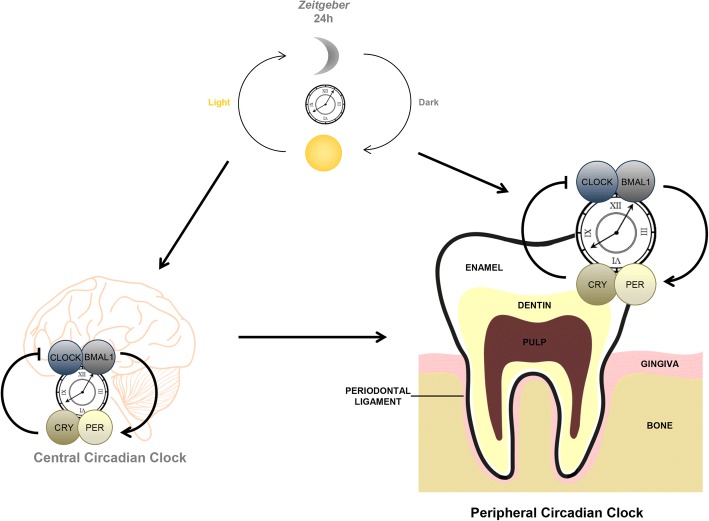Fig. 1.
The circadian clock mechanism. Daily alternation between light/dark periods during days/nights are stimuli from the environment (zeitgeber [official technical term]) that entrain 24 h circadian rhythms. The stimuli are received by the central circadian clock in suprachiasmatic nucleus of the brain, regulating the transcriptional-translational feedback loop between the core components of the circadian clock: circadian locomotor output cycles kaput (CLOCK), aryl hydrocarbon receptor nuclear translocator-like (BMAL1), cryptochrome (CRY) and period (PER). Peripheral circadian clocks in different oral tissues receive signals from the central circadian clock or directly from the zeitgeber providing time keeping of physiological functions. Adapted from [91]

